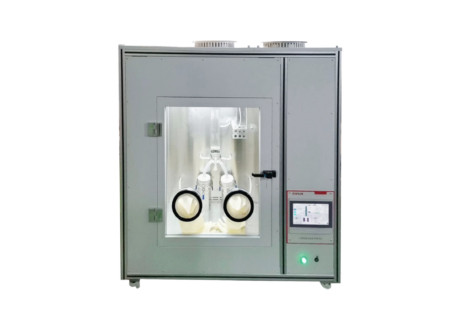-
Choosing the Right BFE Tester: Key Factors to Consider
Edited by:Read:Choosing the right BFE (Bacterial Filtration Efficiency) tester is crucial for manufacturers and researchers in the medical field to ensure the quality and performance of face masks and other filtration materials. The BFE tester plays a significant role in evaluating the effectiveness of these materials in filtering out bacteria, thereby helping to prevent the spread of infections. In this article, we will discuss the key factors to consider when selecting a BFE tester.
1. Accuracy and Precision:
- It is essential to choose a BFE tester that provides accurate and precise measurement results. Look for a tester that conforms to international standards, such as ASTM F2101 or EN 14683, which outline the test methods and performance requirements for bacterial filtration efficiency.
- Consider the measuring range of the tester and ensure it is suitable for your specific testing needs.
- Calibration and regular maintenance of the tester are crucial to maintain accuracy and precision over time. Therefore, check if the tester comes with calibration options and ongoing support.
2. Test Method:
- BFE can be determined using different test methods, such as the aerosol filtration efficiency method or the microbial challenge method. Understand the advantages and limitations of each method and determine which one aligns with your requirements.
- Consider factors such as ease of use, time efficiency, and cost-effectiveness when choosing a test method. Some testers may offer automated features, reducing the manual labor and time required for testing.

3. Equipment Features:
- Look for a BFE tester with user-friendly features that facilitate efficient testing. Features such as touch-screen interfaces, pre-programmed test protocols, and data storage capabilities can enhance usability and streamline the testing process.
- Consider the size and weight of the tester, especially if portability is important for your testing needs. Portable testers are convenient for on-site testing or if you need to move the tester between different locations.
4. Compliance with Standards:
- Ensure that the BFE tester fulfills the necessary regulatory requirements and standards applicable to your industry. This may include standards set by organizations such as ISO (International Organization for Standardization), ASTM (American Society for Testing and Materials), or EN (European Norms).
- Compliance with standards ensures that your testing results are reliable and consistent, and it also demonstrates the quality and safety of your products to customers and regulatory authorities.
5. Support and Training:
- Consider the availability of customer support and training when selecting a BFE tester. Adequate support can be crucial in troubleshooting issues, calibrating the tester, or understanding the test procedures.
- Look for manufacturers or suppliers who provide comprehensive training materials, user manuals, and customer support. This ensures that you maximize the effectiveness of the tester and minimize potential errors or uncertainties in test results.
6. Cost and Budget:
- Evaluate the cost of the BFE tester and your budget constraints. It is important to strike a balance between the price and the features and capabilities of the tester. Consider long-term costs, such as maintenance, calibration, and potential upgrades.
- While cost is an important factor, it should not be the sole determining factor. Prioritize the quality, accuracy, and reliability of the tester, as these factors directly impact the validity of your test results and the quality of your products.
In conclusion, choosing the right BFE tester requires careful consideration of factors such as accuracy and precision, test method, equipment features, compliance with standards, support and training, and cost. By taking these factors into account, you can select a BFE tester that meets your specific testing needs, ensuring the quality and performance of your face masks and filtration materials.
- 2024-04-19Paper ring compression strength tester standards
- 2024-04-19Cupping tester standards
- 2024-04-19Rubber and plastic tensile tester standards
- 2024-04-19Taber 1750 wear-resistant tester standards
- 2024-04-19Stone Chip Resistance Gravelometer standards
- 2024-04-18Diaper absorption speed tester standards
- 2024-04-18Diaper leakage tester technical indicators
- 2024-04-18Paint film impact resistance tester standards
- 2024-04-18Low temperature brittleness tester principle
- 2024-04-18Battery separator permeability tester technical indicators



